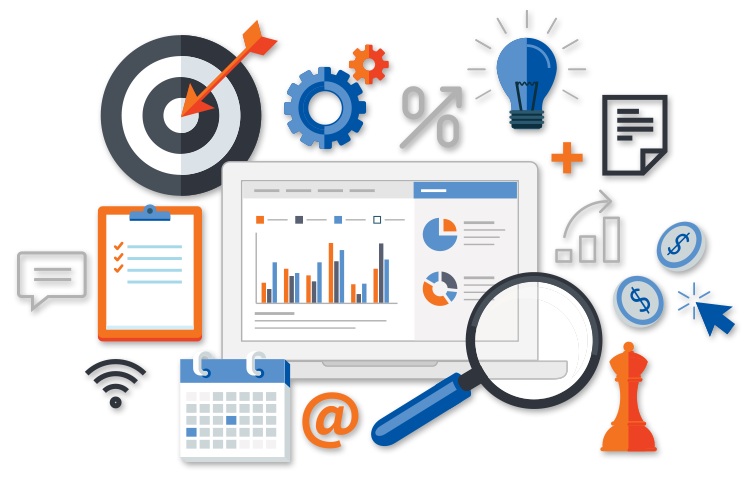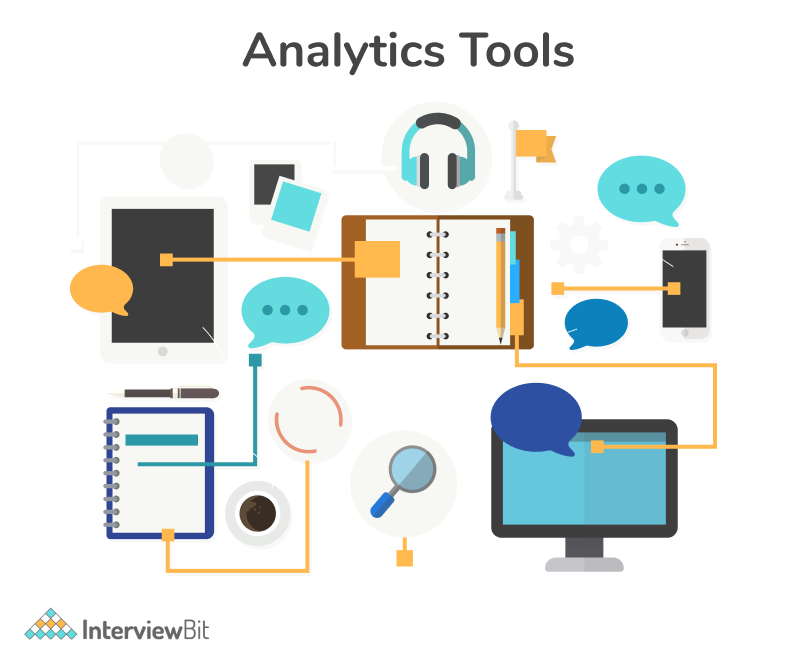Improve Your Procedures with Intelligent Analytics Systems
Improve Your Procedures with Intelligent Analytics Systems
Blog Article
Increase Performance and Productivity Via Information Analytics
In today's data-driven landscape, organizations are progressively recognizing the essential function of information analytics in improving functional performance and earnings. By systematically examining data, companies can uncover critical understandings that notify strategic choices, streamline processes, and dressmaker customer experiences.
Recognizing Data Analytics
In today's data-driven landscape, recognizing data analytics is crucial for organizations aiming to enhance operational performance and drive success. Information analytics involves the organized computational analysis of data sets to reveal patterns, relationships, and understandings that inform decision-making. By using different strategies, such as statistical analysis, artificial intelligence, and anticipating modeling, companies can change raw information right into workable intelligence.
The process normally starts with information collection, where relevant information is gathered from multiple resources, consisting of transactional databases, client communications, and market fads. This data is after that cleaned up and arranged to make certain precision and consistency. Once the data is prepared, logical tools and software are made use of to discover and imagine the info, enabling stakeholders to determine patterns and abnormalities.
Ultimately, comprehending information analytics encourages companies to make educated choices based upon empirical proof instead of intuition. It facilitates targeted methods that can optimize source allocation, enhance client complete satisfaction, and boost total efficiency. As services significantly acknowledge the value of data-driven understandings, a strong grasp of information analytics becomes an essential proficiency for groups and leaders alike, positioning them for continual success in a competitive atmosphere.

Key Benefits for Businesses
Companies that leverage data analytics can open a wide variety of benefits that substantially boost their procedures and productivity. Among the primary advantages is boosted decision-making. Information analytics gives workable insights stemmed from real-time information, permitting companies to make enlightened options that align with market demands and consumer preferences.

Additionally, information analytics cultivates boosted consumer experiences. By understanding client habits and choices, businesses can tailor their offerings, resulting in raised fulfillment and loyalty. This personalized approach frequently leads to higher conversion prices and repeat organization.
Moreover, data analytics allows organizations to identify arising trends and possibilities. By staying ahead of the curve, companies can take advantage of new markets and advancements before their rivals.
Carrying Out Data-Driven Approaches
Successful application of data-driven strategies needs a thorough understanding of both organizational goals and readily available information sources. Organizations must initially define their purposes plainly, making sure placement between data efforts and tactical aims. This clearness enables groups to concentrate on pertinent metrics and understandings that drive decision-making.
Following, services must examine their existing data framework. This involves assessing data quality, access, and assimilation abilities. Premium information is essential for precise evaluation, as poor information can lead to misguided methods and squandered sources. Organizations needs to establish procedures for information collection, cleaning, and monitoring to keep information honesty.
In addition, fostering a data-driven society is vital. Staff members in any way levels need to be encouraged to take advantage of data in their day-to-day procedures. Training workshops and programs can boost data literacy, empowering team to make educated choices based upon analytical insights.
Tools and Technologies Overview
A robust suite of tools and innovations is necessary for organizations intending to harness the complete capacity of data analytics. These tools help with the collection, handling, and visualization of information, enabling organizations to acquire workable understandings.
At the foundational degree, information monitoring platforms such as SQL data sources and NoSQL systems offer efficient data storage and access capacities. For information processing and evaluation, shows languages like Python and R, in addition to structures such as Apache Glow, make it possible for complicated estimations and machine discovering applications.
Visualization devices, including Tableau and Power BI, transform raw information right into intuitive visual formats, making insights accessible to stakeholders in all degrees. In addition, cloud-based platforms like Google Cloud and AWS offer scalable storage and processing solutions, fitting the growing quantities of data companies encounter.
For sophisticated analytics, anticipating modeling and AI-driven solutions are significantly taken on, allowing companies to dig this forecast trends and improve decision-making procedures. Incorporating these devices right into existing operations is paramount; companies that efficiently take advantage of this modern technology can significantly boost operational effectiveness and drive productivity. Thus, spending in the right devices and technologies site here is a calculated vital for any data-driven organization.
Study of Success
Leveraging information analytics has actually led many organizations to achieve amazing improvements in efficiency and earnings. One notable situation is a big retail chain that carried out predictive analytics to enhance stock administration. By analyzing historic sales data and client fads, the business reduced excess stock by 30%, bring about significant expense financial savings and enhanced capital.
An additional example can be discovered in the production market, where a leading auto producer used information analytics to improve its production procedures. By keeping an eye on maker performance in real-time, the company recognized bottlenecks and inefficiencies, resulting in a 20% increase in total equipment performance (OEE) This not only boosted manufacturing rates yet also reduced downtime and upkeep expenses.

These case studies illustrate just how data analytics can drive strategic decision-making, maximize processes, and ultimately boost both effectiveness and profitability across numerous sectors.
Final Thought
In verdict, the combination of data analytics into company operations offers substantial possibilities for improving efficiency and success. By systematically evaluating data, organizations can recognize inefficiencies, maximize customer experiences, and make educated decisions.
In today's data-driven landscape, Homepage understanding information analytics is necessary for companies intending to improve operational efficiency and drive success. Information analytics involves the organized computational analysis of information collections to reveal patterns, connections, and insights that inform decision-making. Data analytics gives actionable understandings obtained from real-time data, allowing services to make informed options that align with market demands and consumer choices.
High-grade information is important for precise analysis, as bad data can lead to illinformed approaches and wasted resources. Organizations has to establish procedures for data collection, cleaning, and monitoring to keep information honesty.
Report this page